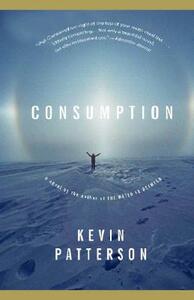Take a photo of a barcode or cover
Especially liked the medical essays "sprinkled" through the book. While I admire those who live in this arctic environment, I am happy to be under a blanket in a warm and toasty house reading this one! Thought-provoking, sometimes annoying (by the characters)worth the read.
I was never really able to get in to this story. I found the premise really interesting, but it was hard to follow the characters and time jumped a lot without really any explanation. The ending was predictable, but I'm still glad I finished it.
Takes place in the 50s-today, and is the story of an Inuit girl with (you guessed it) consumption. She's sent South for treatment, and then after five-six years returned to her family. Problem is, she no longer really belongs... but then, many no longer really "belong" because of the change from an almost nomadic existence on The Land to reliance on whites and housing/labor/niceities. Very interesting look at the tension between all that.
The ending was a bit contrived, though, and loses some of the power of the first 7/8 of the book.
The ending was a bit contrived, though, and loses some of the power of the first 7/8 of the book.
Especially liked the medical essays "sprinkled" through the book. While I admire those who live in this arctic environment, I am happy to be under a blanket in a warm and toasty house reading this one! Thought-provoking, sometimes annoying (by the characters)worth the read.
Victoria is sent away from her Inuit family to the south for tuberculosis treatment as a child, ultimately spending six years away from the north. When she returns, she remains something of an outsider in her small community, marrying a white man and yearning for news of the outside world. Life changes dramatically over the years chronicled in this novel as the Inuit give up their nomadic lifestyle and settle in Rankin Inlet, and diamond mining divides the community.
Sometimes I got the sense that the author wanted to do too much and follow too many threads and characters - I had a feeling that the novel morphed a few times while it was being written. In particular, there is a portion at the end that feels like it may have been an attempt to spell out ideas that could have been left as more subtle themes, or which may have resulted from a previous iteration of the tale that now no longer quite fit (although, again, was interesting). But it had a richness to it and layers that I enjoyed thinking about. So I fell somewhere between 'liked' and 'really liked.'
Sometimes I got the sense that the author wanted to do too much and follow too many threads and characters - I had a feeling that the novel morphed a few times while it was being written. In particular, there is a portion at the end that feels like it may have been an attempt to spell out ideas that could have been left as more subtle themes, or which may have resulted from a previous iteration of the tale that now no longer quite fit (although, again, was interesting). But it had a richness to it and layers that I enjoyed thinking about. So I fell somewhere between 'liked' and 'really liked.'
Life in Rankin Inlet, Nunavut, a place I've never been and might never go, but find fascinating nonetheless. It's the kind of place, way up North, where things have changed from a traditional way of life (with some Hudson's Bay presence in certain months) to a "modern" way of life, with villages (instead of nomadism), ATVs (instead of dogs), houses (instead of igloos), satellite TV (instead of seal oil lamps), and chef boyardee (instead of cariboo and seal and whale and char). Consumption certainly doesn't glamorize the old ways, but neither does it glamorize the new. Things are hard up there and always have been. Now they're just a different hard.
But despite all this, for some reason I didn't find the book depressing. Instead I want to see the ice fill Hudson's Bay and the narwhals and belugas pop up for air.
But despite all this, for some reason I didn't find the book depressing. Instead I want to see the ice fill Hudson's Bay and the narwhals and belugas pop up for air.
I learned a fair bit about Canadian culture and the recent history of the far north, but otherwise it seems to be a fairly standard story of post-colonisation culture clash.
A very interesting story with a large cast of characters. The descriptions of the Arctic and the Inuit practices were the best parts of this novel for me. I felt that there were so many narrative threads and some plot points occurred in such quick succession that I was left, as the reader, with not enough time to process with them. The conclusion of the book seemed long and dragged a bit for my liking. However, I would recommend this novel for anyone interested in a story about the Arctic and the Inuit people and how modernization has altered the landscape and the Inuit way of life.
Doing a re-read of Consumption for the CBC Goodreads Monthly Group Read.
Just as wonderful as the first read - perhaps maybe more so because of reading it slowly and in a group setting. A fantastic story that has been a bright spot in otherwise fairly dull reading for much of this month.
Just as wonderful as the first read - perhaps maybe more so because of reading it slowly and in a group setting. A fantastic story that has been a bright spot in otherwise fairly dull reading for much of this month.


